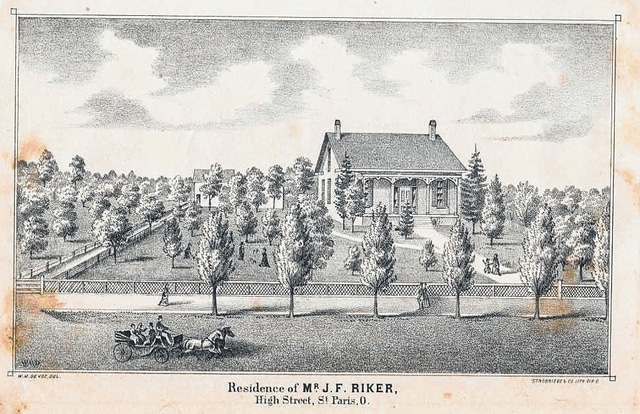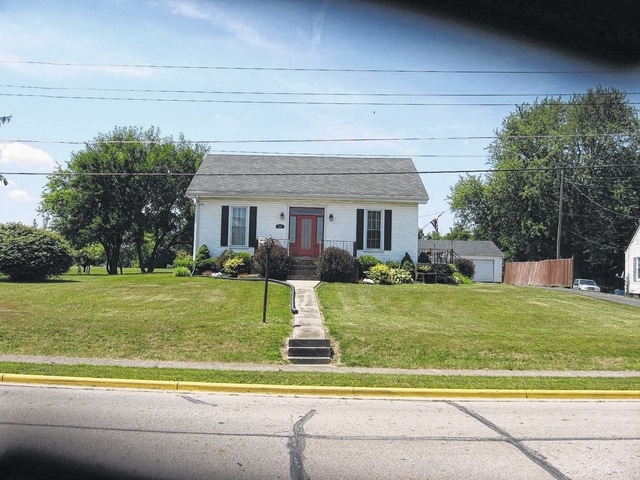

ST. PARIS – The William DeVoe sketch from the 1874 Champaign County Atlas illustrates a rather simple home of John Ferris Riker. Back in 1858, John was the first mayor of St. Paris, after he had returned home empty-handed from his adventures in the California Gold Rush with his brother Aaron, marrying, and starting a family.
The 1881 bio of John Riker, published by Beers in History of Champaign County, lists him as a noteworthy gardener of fruits and vegetables and calls the business venture “a new and unique feature of its kind in Johnson Township.” It also lists him as having been a teacher. J. F. Riker & Co. is also sketched in the 1874 Atlas as a Manufacturer & Dealer in Hard & Soft Lumber, Lath & Shingles, Sash, Doors, Blinds, Mouldings, Flooring, & Siding on South Springfield Street. He married Eliza Anne Lichlider in 1854. She would live to be almost 99. They experienced living in the pioneer days in our Champaign County amongst the native Indians, the Gold Rush of 1849, President Lincoln’s assassination, the advent of baseball, the invention of the automobile and the airplane. It was quite a life lived by remarkable citizens of St. Paris who lived in this home featured in the atlas. John began Civil War service as a Captain of Volunteers in Company E-113th, Ohio Volunteer Infantry and was fortunate to come home uninjured. He then served several more terms as mayor of the town. Their son, Freeman Riker co-owned the Walborn-Riker Company, a then well known pony wagon maker, and grandson Ben Riker wrote in 1948 the historical account of Saint Paris during its buggy making days called “Pony Wagon Town.” The Rikers were a family institution in St. Paris town history. Freeman’s sister, Emma, married Charles Brown in 1889 while sister Carrie married a Frazier.
Now who would guess that this home at 208 High Street, Saint Paris (in the “now” photo) was built before 1874? It looks quite modern, electrical lines and telephone lines running several directions. A personal lighted post welcomes guests at the beginning of the walkway up to the front door. The extended covered porch has been replaced with an open smaller wrought iron railed stoop. The windows still have shutters and the front door appears to be the original front door of the 1874 home. No roof-top chimneys appear to be needed for the heat system anymore. High Street is one of the last streets running north and south on the west side of town. It must be a busy street as no parking is allowed in front of this home, indicated by the yellow painted curb. A privacy fence is observed along the driveway as another home is close by and of course what every American modern home wants, a two-car garage and paved lane. The property owners show a concern to make sure the roof water run off is drained away from the house to help assure a dry foundation. This appears to be is a very well preserved old house.



